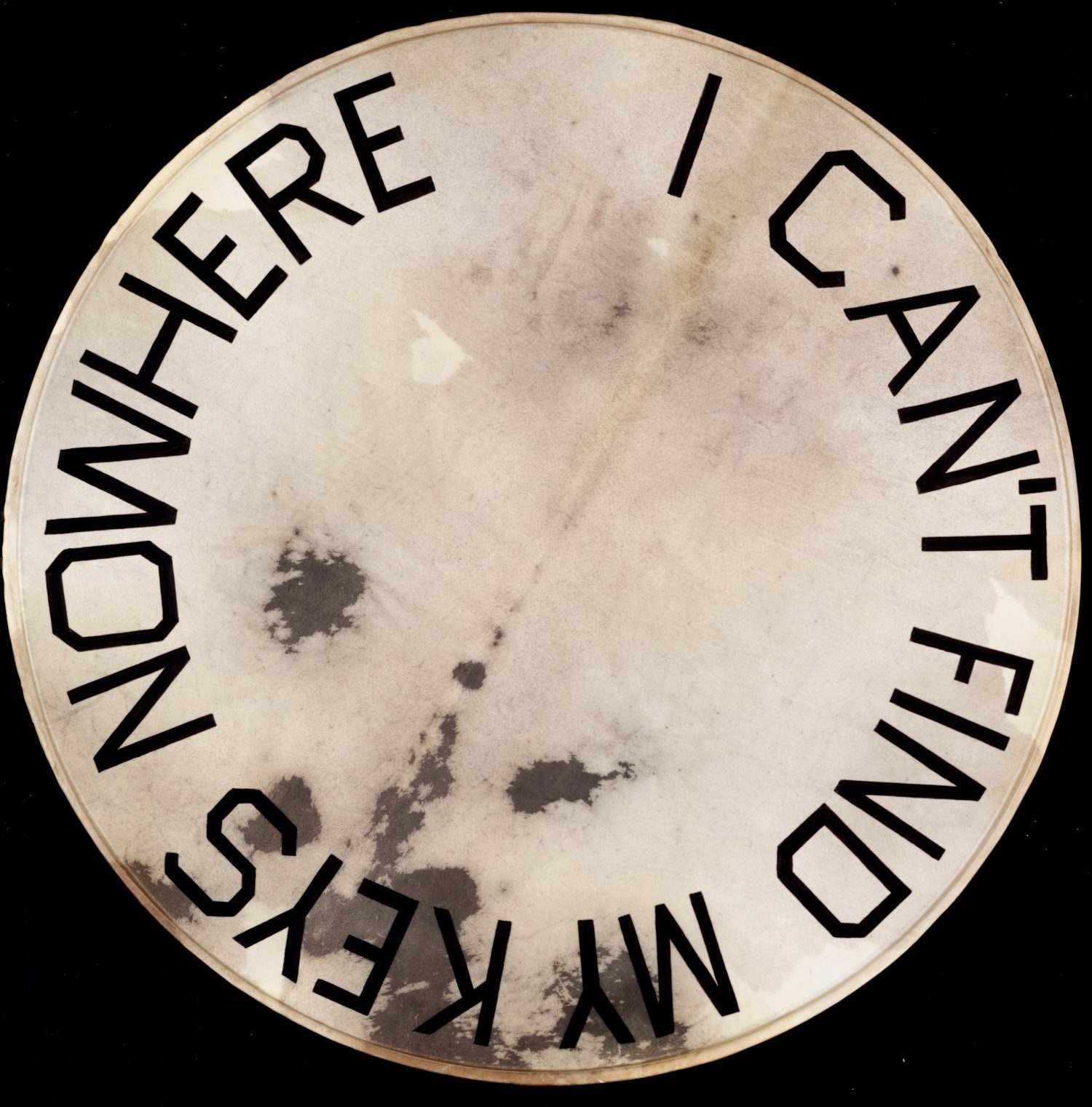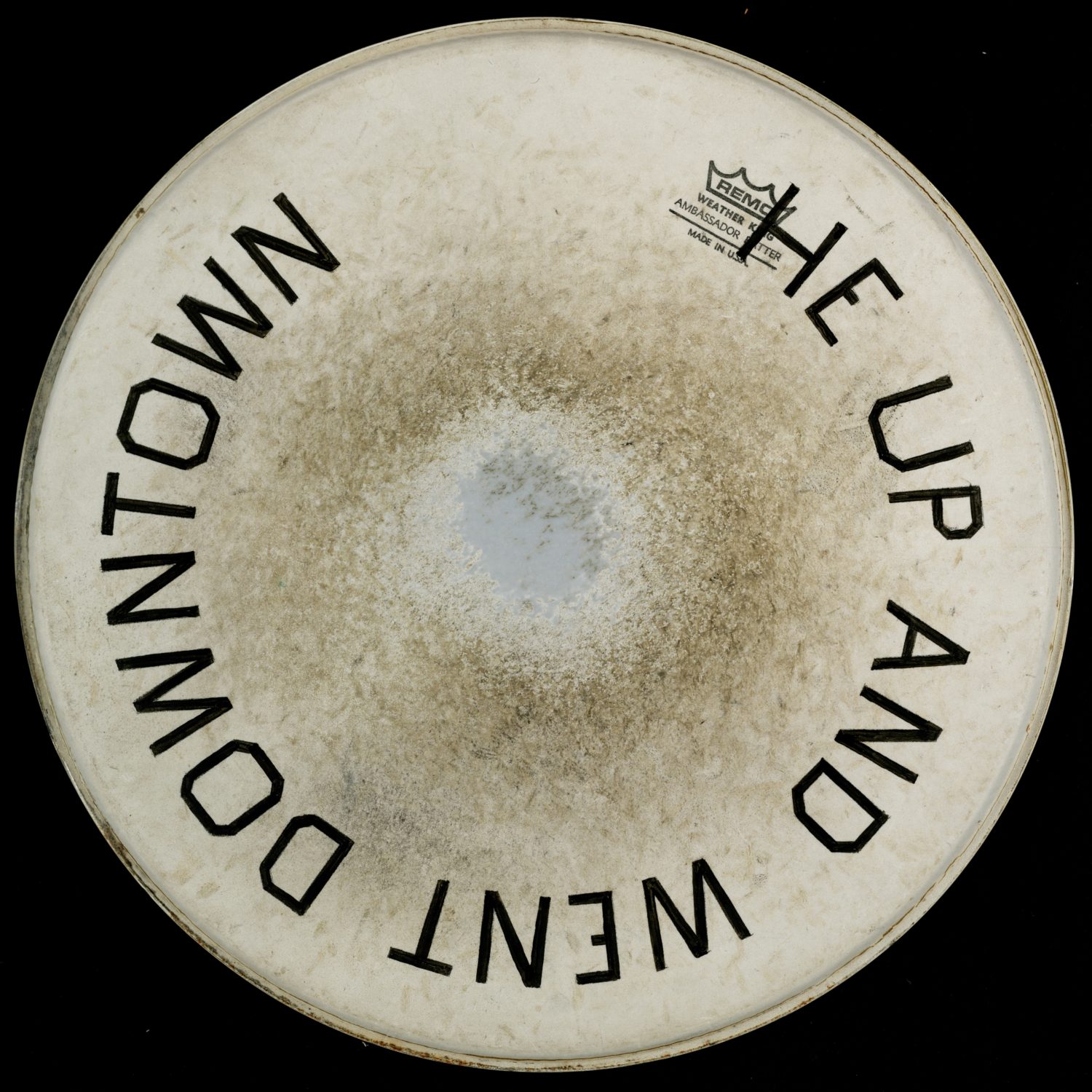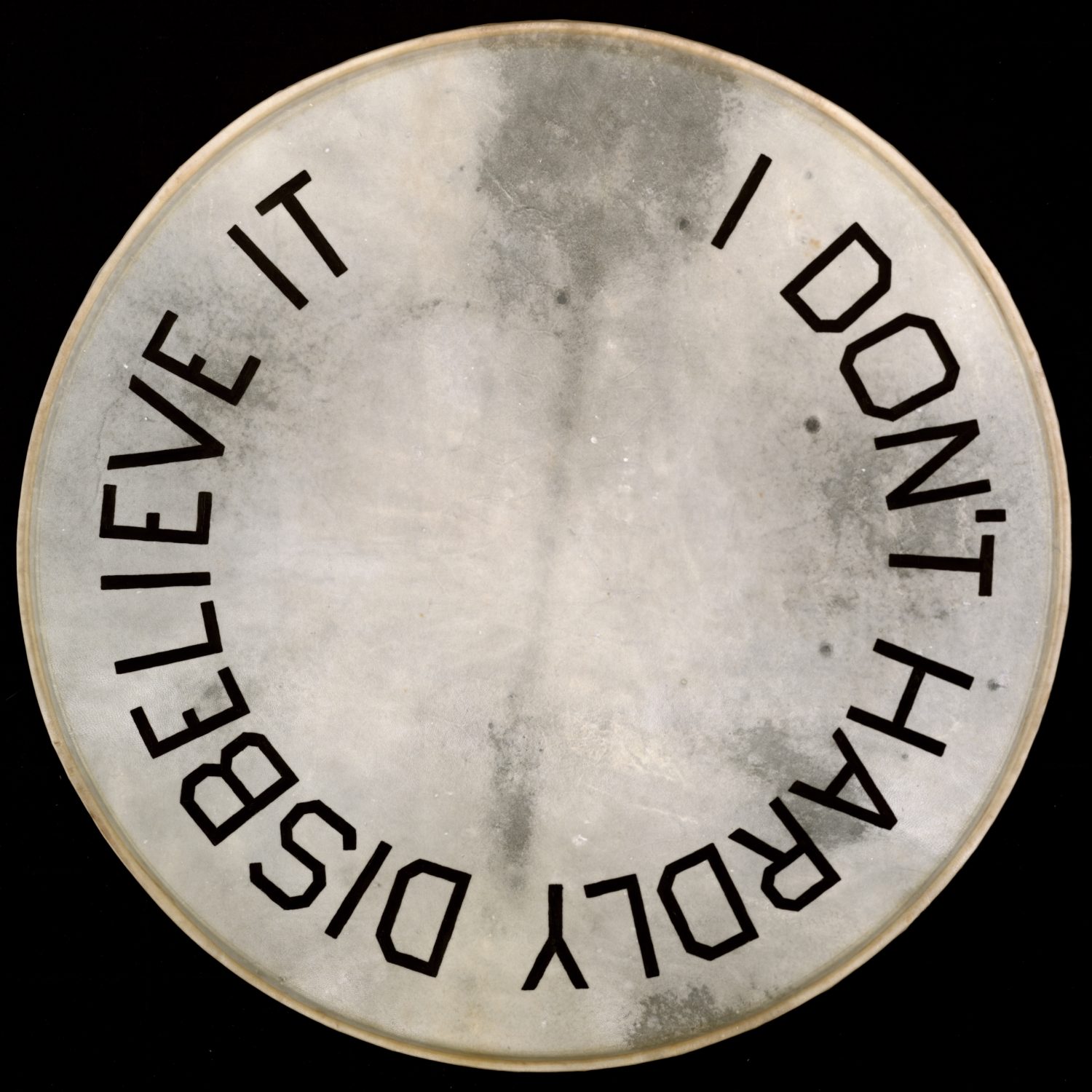ART-PRESENTATION:Ed Ruscha-Drum Skins
 One of the most important postwar artists, Ed Ruscha came into prominence during the 1960s pop art movement. First recognized for his associations to graphic design and commercial art, Ruscha became admired for his meditations on word and image. Working in a variety of media and taking the environment of Los Angeles as a guide, Ruscha creates candid, comic presentations of familiar ideas and locations that continue to impact contemporary art.
One of the most important postwar artists, Ed Ruscha came into prominence during the 1960s pop art movement. First recognized for his associations to graphic design and commercial art, Ruscha became admired for his meditations on word and image. Working in a variety of media and taking the environment of Los Angeles as a guide, Ruscha creates candid, comic presentations of familiar ideas and locations that continue to impact contemporary art.
By Efi Michalarou
Photo: Blanton Museum of Art Archive
Ed Ruscha’s solo exhibition “Drum Skins” debuts a new body of 13 round paintings made between 2017 and 2019 by the iconic American artist known for his use of language. “Drum Skins” brings Ruscha’s distinctive observations about American vernacular and culture to a new medium. The installation includes 13 text-based works painted on drumheads, which Ruscha has collected over the past 40 years. Most of the paintings feature phrases with double and triple negatives such as “Not Never”, “I Can’t Find My Keys Nowhere” and “I Don’t Hardly Disbelieve It”. Ruscha attributes these phrases to spending his childhood in Oklahoma, noting that “I grew up with people that spoke this way.…I was very acutely aware of it and amused by it.” They are all printed in his signature font, which he refers to as “Boy Scout Utility Modern”. Several feature phrases overlaid on a mountain, a common visual motif in Ruscha’s works. For the past six decades, Ruscha has explored the complex relationship between images and text. As a young artist in Los Angeles, he developed a fascination with typography when he worked as an apprentice setting type for a printing press: “somehow [it] led me off on this path, almost like a bumper car…. The idea of poetry, a selection of oddities of words, strange or double meanings, became my interest. I began to see that painting words was a real thing, a legitimate subject matter.”
Born on 16/12/1937, in Omaha, Nebraska, Edward Ruscha grew up in Oklahoma City, where his family moved in 1941. After finishing high school in 1956, he relocated to Los Angeles intending to become a commercial artist. Instead, he attended the Chouinard Art Institute (now California Institute of the Arts), Los Angeles, from 1956 to 1960. Ruscha began his career as a graphic artist but expanded his production to encompass drawing, painting, photography, and artist books that explore the banality of the urban landscape. Ruscha’s works function as alternatives to mass-media depictions of life in Los Angeles and on the West Coast. His early interest in commercial art and work as a graphic designer and layout artist for an L.A. advertising agency, as well as his distrust and frustration with the traditional hierarchies of painting and sculpture led him to create works that challenged prevalent styles such as Abstract Expressionism. Resisting the labels of Pop or Conceptual artist, Ruscha nevertheless incorporates elements of both movements into his paintings and photographs, and his work influenced the development of later Conceptual art in the United States, serving as a forerunner to that of practitioners as varied as Bruce Nauman, Robert Smithson, and Lawrence Weiner. The deadpan, documentary-style photography of his accordion-fold artist book Every Building on the Sunset Strip (1966) is a quintessential example of the post-Conceptual photography of that era.
Info: Curator: Veronica Roberts, Blanton Museum of Art, The University of Texas at Austin, 200 E. Martin Luther King Jr. Blvd., Austin, Duration 11/1-12/7/20, Days & Hours: Tue-Fri 10”00-17:00, Sat 11:00-17:00, Sun 13:00-17:00, https://blantonmuseum.org




